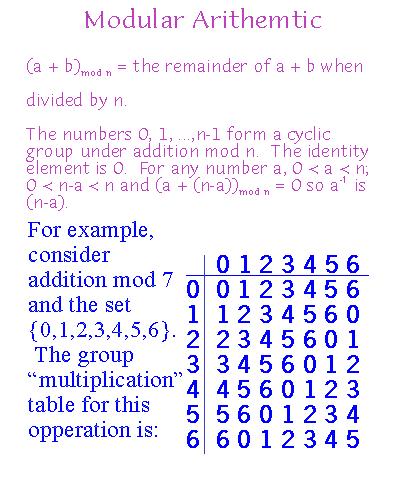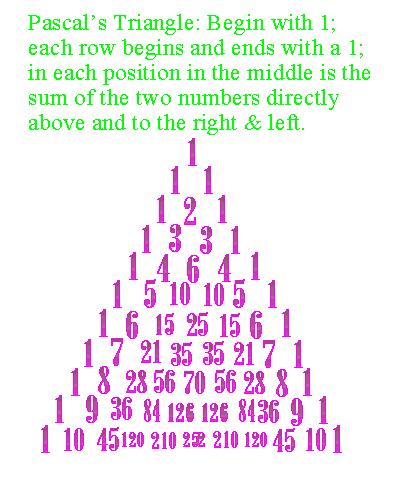

Pascal's triangle is an arrangement of numbers with a simple rule for production that yields the binomial coefficients.
The (k-1)st number in the nth row is the number of different ways that you can choose k items from a set of n items. For example, suppose you have 10 people and you need to make a committee of three people there are 10 choose 3 different committees. go to the 10th row and count out 3+1 or 4 numbers and see that there are 120 different committees you could make.
These numbers also give the coefficient of
x^
!

If the addition in the rule for producing Pascal's
triangle is done mod n then it is possible to color
the positions with n colors and make a colored triangle with
interesting patterns.
 The patterns are very different for different values of n.
Click Here to see hexagons made
from six of Pascal's modular triangles for n = 2 to 16.
Click here
for the same hexagons in different colors.
The patterns are very different for different values of n.
Click Here to see hexagons made
from six of Pascal's modular triangles for n = 2 to 16.
Click here
for the same hexagons in different colors.
Home
Copyright 1996
Kathleen M. Shannon --
All Rights reserved.